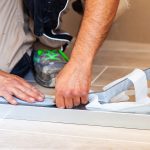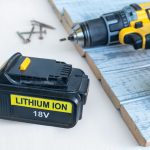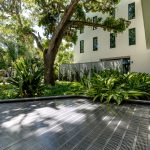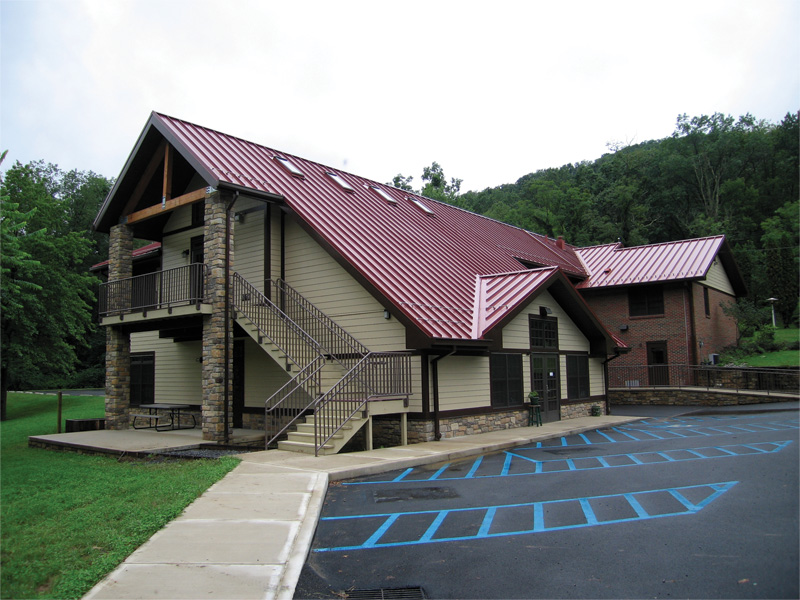
Winter has become harder to predict. While the Northeast continues to face its characteristically harsh, snowy winters, the U.S. South is also experiencing more frequent cold-weather events. For instance, an early snowstorm this year pushed deep into the South, from the Ohio River Valley to parts of the Mid-Atlantic, catching many regions off guard.
For contractors, this shift raises the stakes for ensuring more resilient exteriors. Buildings must be designed to perform under increasingly unpredictable conditions, and the roof often carries the heaviest burden. As one of the largest exposed surfaces of the building envelope, roofing is not just the top layer; it is the frontline defense against snow, wind, falling branches, and ice.
Standing seam metal roofs with high-quality metal substrate can endure extreme temperatures and weather, including snow and blizzards. With the addition of snow control systems, such as engineered snow guards, these roofs provide extra protection by managing how snow and ice are released from the surface. Combined, these systems offer significant benefits to contractors and can help to mitigate the compound challenges of snow accumulation and melting.
Metal roofs reduce risks from snow accumulation
Snow accumulation on a roof is more than a maintenance issue—it can be a serious concern. Accumulated snow is incredibly heavy and, if not properly managed, can lead to roof leaks, interior water damage, ice dams, and, in severe cases, permanent structural damage. For these reasons, managing snow effectively is key for contractors in regions prone to winter storms.
With its smooth, non-porous surface, standing seam metal roofing offers a distinct advantage. Because the panels disperse solar heat evenly across the roof’s surface, it sheds snow rapidly, rather than keeping it trapped on the roof. By shedding snow more quickly, a standing seam metal roof minimizes the duration and intensity of live loads imposed on the building below, preserving the roof’s structural integrity and reducing the risks associated with accumulation.
Inherently durable, metal roof panels also provide long-term reliability under harsh winter conditions. Unlike traditional roofing materials that may crack, split, or deteriorate during freeze–thaw cycles, high-quality metal substrates perform as intended across various temperatures. This resilience helps contractors deliver roofing systems that withstand extreme weather events and reduce the likelihood of costly callbacks over time.
Defending against winter storms
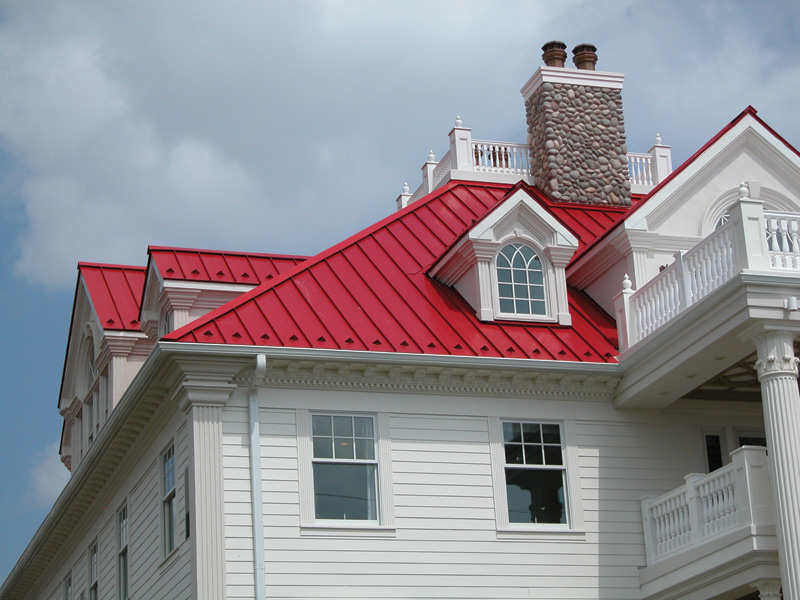
Snow is not the only hazard contractors must deal with during extreme winter weather events. Snow-laden branches can snap under added weight and strike the roofs below. Standing seam metal roof systems defend against impact and water intrusion that may follow a snowstorm. Products certified with a Class 4 rating under UL 2218 offer the highest level of impact resistance to withstand falling ice chunks and broken branches during snow and ice events.
Metal roofs also offer excellent wet-weather performance when the snow melts, thanks to their inherently durable and moisture-resistant substrate. Underscoring its weatherability, metal roof systems are certified to ASTM E1646 Water Infiltration standards. When paired with proper underlayments and advanced protective coatings, these assemblies offer a high degree of weather-tightness that reduces the risk of infiltration through the roof deck. This helps protect the insulation, structural framing, and interior finishes below. Additionally, standing seam metal roofs can resist high wind speeds and uplift during winter storms.
Installation details further enhance resilience. Interlocking panels and robust fastening systems improve resistance to storm-driven uplift and moisture penetration, protecting the building below. With proven durability against wind, rain, snow, hail, and debris, standing seam metal roofs often last two to three times longer than traditional materials such as asphalt shingles. For contractors, longevity and reliability translate into fewer callbacks and greater value for building owners.
Snow retention systems enhance safety
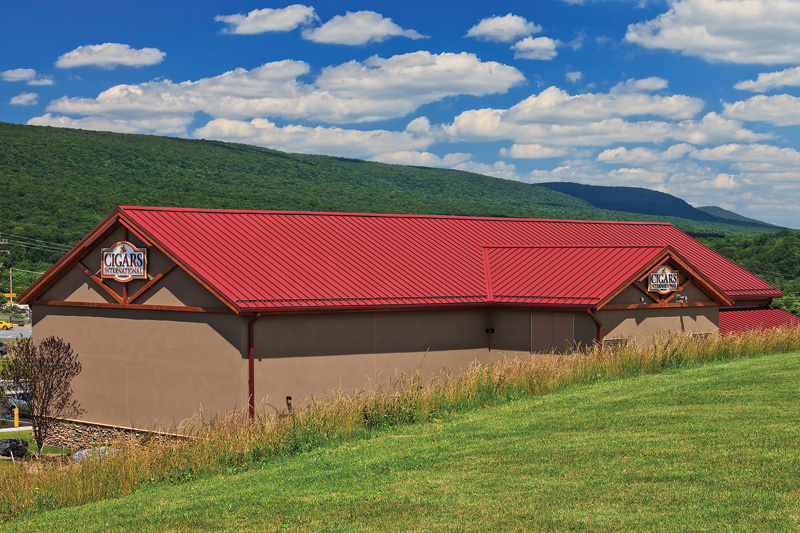
While standing seam metal roofs’ natural snow-shedding ability is an advantage, it can also pose safety risks if left unmanaged. Large sheets of snow and ice sliding off a roof at once can damage gutters and landscaping or, in the worst cases, injure people below.
A properly designed snow retention system mitigates these hazards. These systems function in two ways. First, snow guards increase friction between the roof surface and accumulated snow, helping to hold it in place. Secondly, they regulate how quickly snow and ice are shed from the roof, allowing a gradual, controlled evacuation rather than a sudden slide. This release reduces the risk of property damage and personal injury, making snow retention systems an essential investment in snow-prone regions.
That said, careful product selection and proper installation are critical. Low-quality or improperly installed guards can shift under pressure, underperforming during heavy snowfall or even damaging the roof.
High-performing snow guards run continuously across the roofing plane, allowing for thermal expansion and contraction. These shifts mitigate the stress of repeated cycles of expansion and contraction, which can create stress on rigid attachments, fasteners, or snow retention components. Snow retention systems are designed to move with the roof to prevent warping, bending, or detachment of the snow guards and avoid damage to the roof surface.
Treat metal roofs as a complete system to prevent ice dams
Snow retention is one part of the winter roofing equation, but it works best in tandem with another critical safeguard—ice dam prevention. Without proper measures, ice dams can compromise even the most durable roofing systems. They form when heat escapes inside a structure and warms the roof surface, causing snow to melt. As temperatures drop overnight, the melted snow refreezes, typically at the eaves.
Over time, repeated melting and refreezing cycles cause ice ridges that creep up the slope and trap additional meltwater. With nowhere to drain, the trapped water can back up beneath the roof covering, leading to leaks and other long-term damage.
Building science shows that consistent airflow beneath the roof keeps surface temperatures stable, reducing the likelihood of ice dams. Contractors can support this by treating the roof as a complete system. For instance, metal roof panels with integrated insulation and ventilation mechanisms promote cross-directional airflow and thermal stability. These systems minimize hot and cold spots on a metal roof, reduce structural risks, and help ensure that winter weather does not compromise roof performance.
For contractors, delivering this complete solution means providing home and building owners with a roof system that is efficient, durable, safer, and more resilient in snow-prone regions.
Building for the long-term
As snow-prone regions continue to experience more frequent freeze-thaw cycles and heavier precipitation
events, roofing strategies will need to evolve beyond the status quo. Metal roofing, combined with advanced snow retention and ice dam prevention measures, is well-positioned to meet these shifting demands.
For contractors, this opens the door to protecting buildings and future-proofing projects against tomorrow’s climate realities. Those who adopt a whole-system approach, pairing durable products driven by building science, will be at the forefront of delivering resilient, high-performance roofing solutions for decades to come.
Mike Weis serves as vice president of sales for Drexel Metals. He began his career at Reynolds Metals Company in 1995, then joined Petersen Aluminum in 1999 as Southeast sales manager, later advancing to vice president of sales and marketing. With over 30 years of experience in the architectural metals industry, Mike has established himself as a respected leader in architectural metal envelope solutions.



